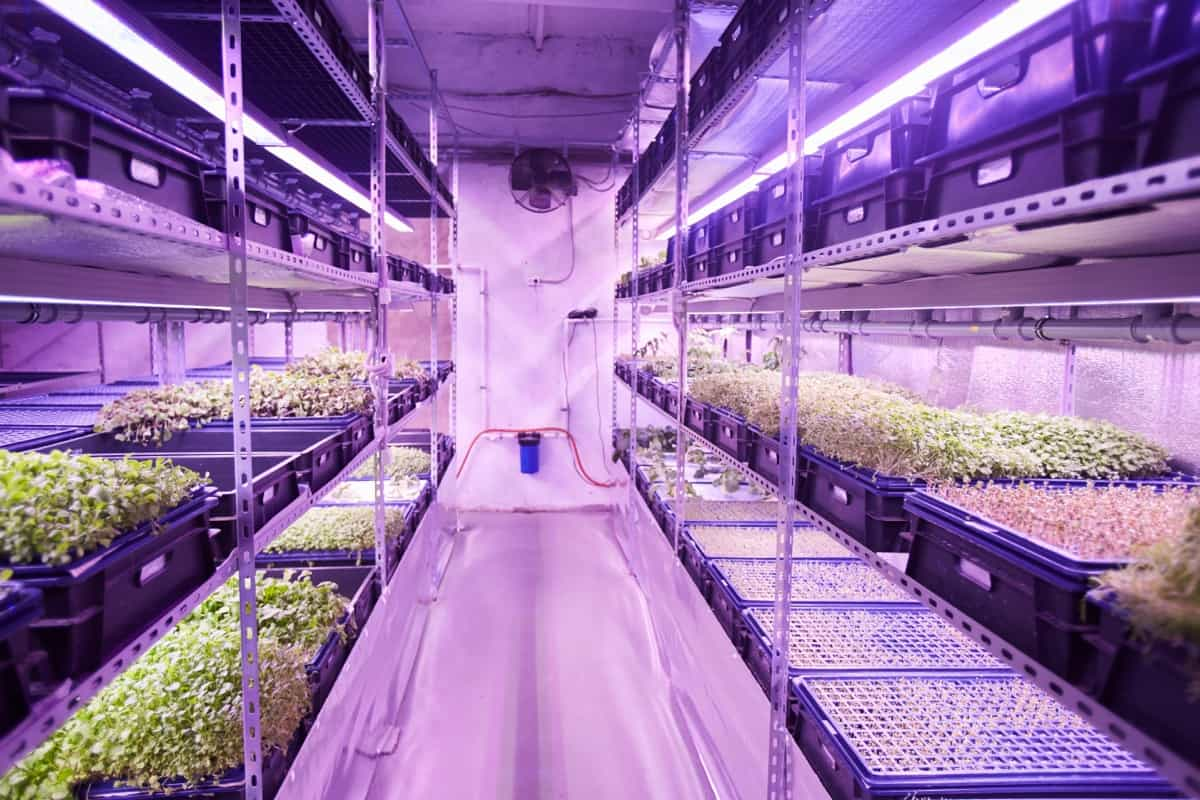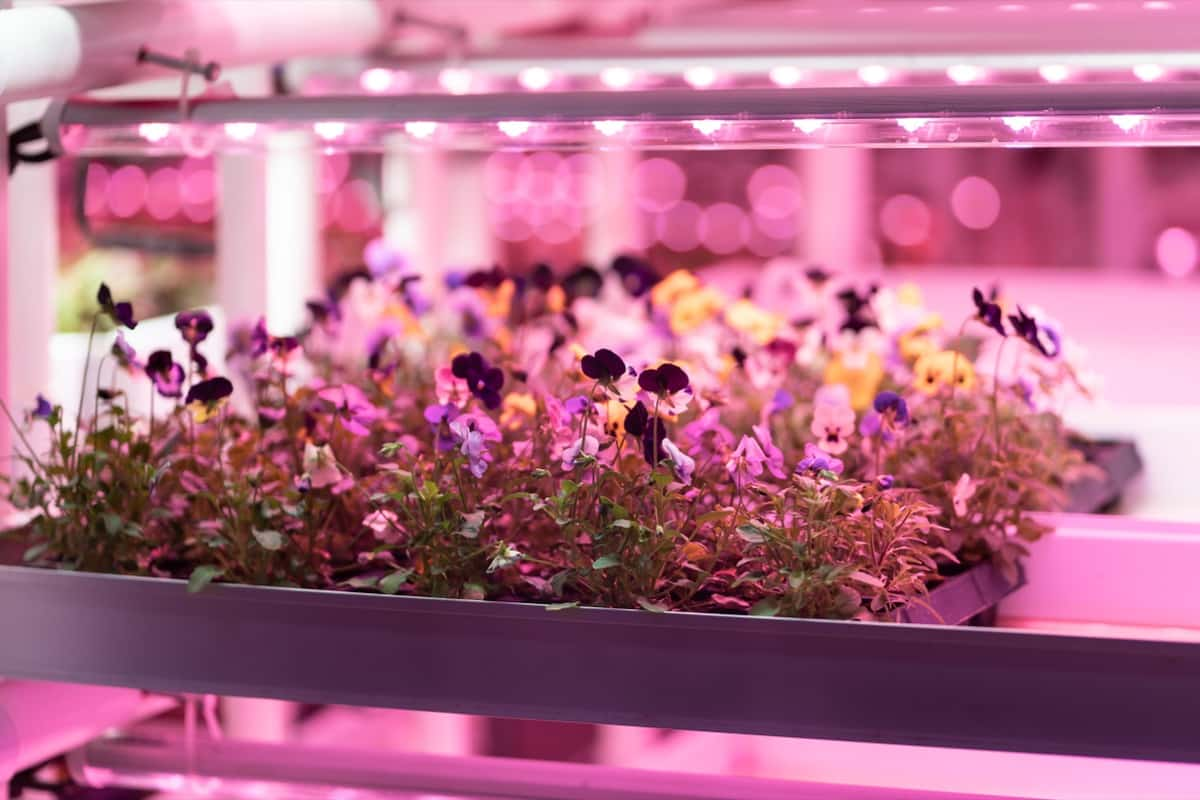Grow lights are valuable for anyone looking to start their indoor seedlings. They provide the necessary light spectrum and intensity to ensure healthy plant growth, even in spaces with limited access to natural sunlight. Consider light duration, distance from plants, and proper ventilation when using grow lights. Whether starting your vegetable garden or nurturing beautiful houseplants, a well-designed grow light system can provide the perfect conditions for healthy growth.

How to Use Grow Lights for Indoor Seedlings
Basics of Grow Lights for Indoor Seedlings
When growing indoor seedlings, understanding the basics of using grow lights is crucial. These artificial light sources provide the light energy plants need for photosynthesis, enabling them to grow healthy and strong. One key aspect is that not all grow lights are created equal. Different grow lights emit different wavelengths of light, which can affect plant growth in various ways. The most common are fluorescent, LED, and high-intensity discharge (HID) lights.
Fluorescent lights are popular for indoor seedling growth due to their affordability and efficiency. They emit a cool spectrum of light that promotes vegetative growth. On the other hand, LED lights are more energy-efficient and customizable, allowing you to adjust the light spectrum based on your plants’ needs. HID lights offer intense illumination but tend to generate more heat than LEDs or fluorescents, requiring adequate ventilation.
What Color Light is Best for Seedlings? In addition to choosing the right type of grow light, determining the optimal light spectrum is essential for successful seedling growth. Blue light promotes compact foliage development, while red light stimulates flowering and fruiting. A combination of both spectrums is often recommended during different stages of plant growth.
Choosing the Right Type of Grow Light for Your Indoor Seedlings
Should You Use a Grow Light to Start Seeds Indoors? Starting seeds indoors can be the best way to jumpstart your garden. One important consideration is the amount of natural light available in your home. If you have limited access to sunlight or insufficient intensity, using a grow light can ensure that your seedlings receive the necessary light spectrum for healthy growth.
When growing seedlings indoors, having the right grow light is essential. While many options are available on the market, finding a budget-friendly option can be challenging. Research and found some of the best cheap grow lights for seedlings. Choosing the right grow light for indoor seedlings is crucial to their healthy and robust growth.
In case you missed it: 9 Causes of Seedlings Turning Yellow: Treatment, Prevention, and Solutions

LED grow lights have gained popularity among indoor gardeners due to their energy efficiency and customizable settings. They emit less heat than other lights, reducing the risk of burning your delicate seedlings. Additionally, LED lights come in various colors and spectrums that can be adjusted according to each stage of plant growth.
When providing the optimal light spectrum for your indoor seedlings, full spectrum LED grow lights for seedlings are a popular choice among gardeners and plant enthusiasts. These lights emit a balanced range of wavelengths that closely mimic natural sunlight, ensuring your young plants receive all the necessary light they need to thrive.
Fluorescent lights are another popular choice for indoor seedlings. They are affordable and provide a good amount of light for young plants. T5 fluorescent bulbs are particularly efficient as they produce a high-intensity output while consuming minimal energy. If you want something more powerful, high-intensity discharge (HID) lights may be suitable for larger spaces or commercial setups.
Determining the Optimal Light Spectrum for Indoor Seedlings
When it comes to indoor seedlings, providing them with the right light spectrum is crucial for healthy growth. It’s important to understand that different stages of plant growth require different light spectrums. During the seedling stage, a higher ratio of blue light is needed, as it promotes strong stem and leaf development.
As the plants mature, they require more red light for flowering and fruit production. To ensure your indoor seedlings receive the right balance of light spectrum, consider using full-spectrum LED grow lights. These lights provide various wavelengths that mimic natural sunlight and can be adjusted based on your plants’ needs.
Calculating the Ideal Light Intensity for Indoor Seedlings
Determining the ideal light intensity for indoor seedlings is crucial to their healthy growth and development. Excess light can cause heat stress and stunted growth, while too little light can result in leggy and weak seedlings. How Long to Keep Grow Lights on Seedlings? Determining the ideal duration for keeping grow lights on seedlings is crucial for their healthy development.
It’s important to note that different plants have varying light intensity needs at different growth stages. How Many Hours of Grow Light Do Plants Need? Most seedlings generally require 12 to 16 hours of light per day. This mimics natural daylight and gives them enough energy for photosynthesis and growth. However, it’s important to consider factors such as plant species, growth stage, and environmental conditions.
Positioning and Hanging Grow Lights for Maximum Efficiency
Positioning and hanging grow lights correctly is crucial for maximizing efficiency and ensuring healthy seedling growth. Regarding positioning, the height at which you hang your grow lights can greatly impact the intensity of light your plants receive. When choosing the Best Grow Light Setting for Seedlings, finding the right light setting is crucial for their healthy development.
In case you missed it: When to Transplant Lettuce Seedlings: 10 Points Checklist

Seedlings have unique lighting requirements that differ from mature plants, so providing them with optimal light is important. Consider adjusting the height of your grow lights. As a general rule of thumb, place the lights about 2-4 inches above the tops of your seedlings. This distance allows for adequate light penetration without causing heat stress or burning.
When hanging grow lights, ensure they are securely fastened using appropriate hooks or hangers. This will prevent any accidents or damage caused by falling lights. It’s also worth noting that as your seedlings grow, you may adjust the height of your grow lights accordingly. Keeping a close eye on their progress is key to maintaining optimal positioning for maximum efficiency.
Avoiding Common Mistakes When Using Grow Lights for Indoor Seedlings
When it comes to Starting Seedlings Indoors With Grow Lights, there are a few common mistakes that many people make. One mistake is using the wrong type of grow light. Choosing a light that provides the right spectrum of colors for optimal plant growth is important. LED lights are often recommended because they offer a full spectrum of light.
Another mistake is positioning the grow lights too far away or too close to the seedlings. If the lights are too far away, they won’t provide enough intensity for proper growth. On the other hand, if they’re too close, they can burn or stress the plants. It’s also crucial to monitor and adjust the distance between your seedlings and the grow lights as they grow. As plants get taller, you must raise your lights accordingly to maintain an optimal distance.
Monitoring and Adjusting Light Distance for Healthy Seedling Growth
As seedlings develop, specific light requirements must be met to ensure optimal growth and minimize the risk of damage. First, it’s important to understand that light intensity decreases as you move further away from the source. This means that if your grow lights are too far from your seedlings, they may not receive enough light to thrive. On the other hand, if the lights are too close, they can cause burning or stunted growth.
Regularly monitoring your seedlings is key in determining whether you need to adjust the distance of your grow lights. Keep a close eye on how your plants respond to their current lighting setup. If you notice signs of stretching or weak stems, it may indicate that the lights are too far away.
In contrast, if you observe leaf curling or discoloration near the top of your plants, it could mean that they’re getting too much light. When making adjustments, remember to do so gradually. Moving grow lights closer should be done incrementally over several days rather than all at once to avoid shocking or damaging delicate foliage. Similarly, moving them further away gradually until reaching an optimal distance for healthy growth.
Transitioning Seedlings From Grow Lights to Natural Sunlight
It’s important to acclimate your seedlings gradually to the outdoor environment when transitioning them. Start by introducing them to filtered sunlight for short periods each day. This will help prevent shock and sunburn when plants are suddenly exposed to intense sunlight. Begin by placing your seedlings in a sheltered area like a porch or under a shade cloth.
In case you missed it: When to Transplant Pepper Seedlings: 10 Things to Check Before Your Start Growing

Allow them to bask in the gentle morning or afternoon sun for an hour or two. As they adjust, they gradually increase their exposure time over several days. Keep a close eye on your transitioning seedlings during this process. Watch for stress or wilting signs, indicating they need more time indoors before fully exposing them to direct sunlight. Watering is also critical during this transition period.
Make sure the soil remains moist but not overly saturated. Adjust watering frequency as needed based on environmental conditions and plant needs. By taking these gradual steps and closely monitoring your plants’ response, you’ll give them the best chance at thriving outside once they’re ready for full sun exposure. Remember, each type of plant may have specific requirements when transitioning from grow lights to natural sunlight.
Conclusion
Incorporating grow lights into your indoor gardening routine can significantly improve the success rate of growing healthy and strong seedlings. By understanding how different factors such as type, spectrum, intensity, positioning, timing, and supplementing natural light all promote optimal growth conditions, you’ll be well-equipped to harness the power of these artificial lighting solutions in nurturing thriving indoor gardens year-round. With the right knowledge and tools, you can create the best environment for your indoor garden, no matter what season it is outside.
- Feed Your Flock for Less: Top 10 Tips to Save on Chicken Feed
- Ultimate Guide to Ossabaw Island Hog: Breeding, Raising, Diet, and Care
- Hatching Answers: The Top 10 Reasons Your Chickens Aren’t Laying Eggs
- Eggs and Economics: Breaking Down the Cost of Raising Backyard Chickens
- Defend Your Greens: Proven Methods to Keep Iguanas Out of Your Garden
- Ultimate Guide to Cinnamon Queen Chicken: A Comprehensive Guide for Beginners
- Ultimate Guide to California Tan Chicken: Breeding, Raising, Diet, Egg-Production and Care
- Ultimate Guide to Marsh Daisy Chicken: Breeding, Raising, Diet, and Care
- 10 Types of Chicken Farming Businesses You Can Start for Profits